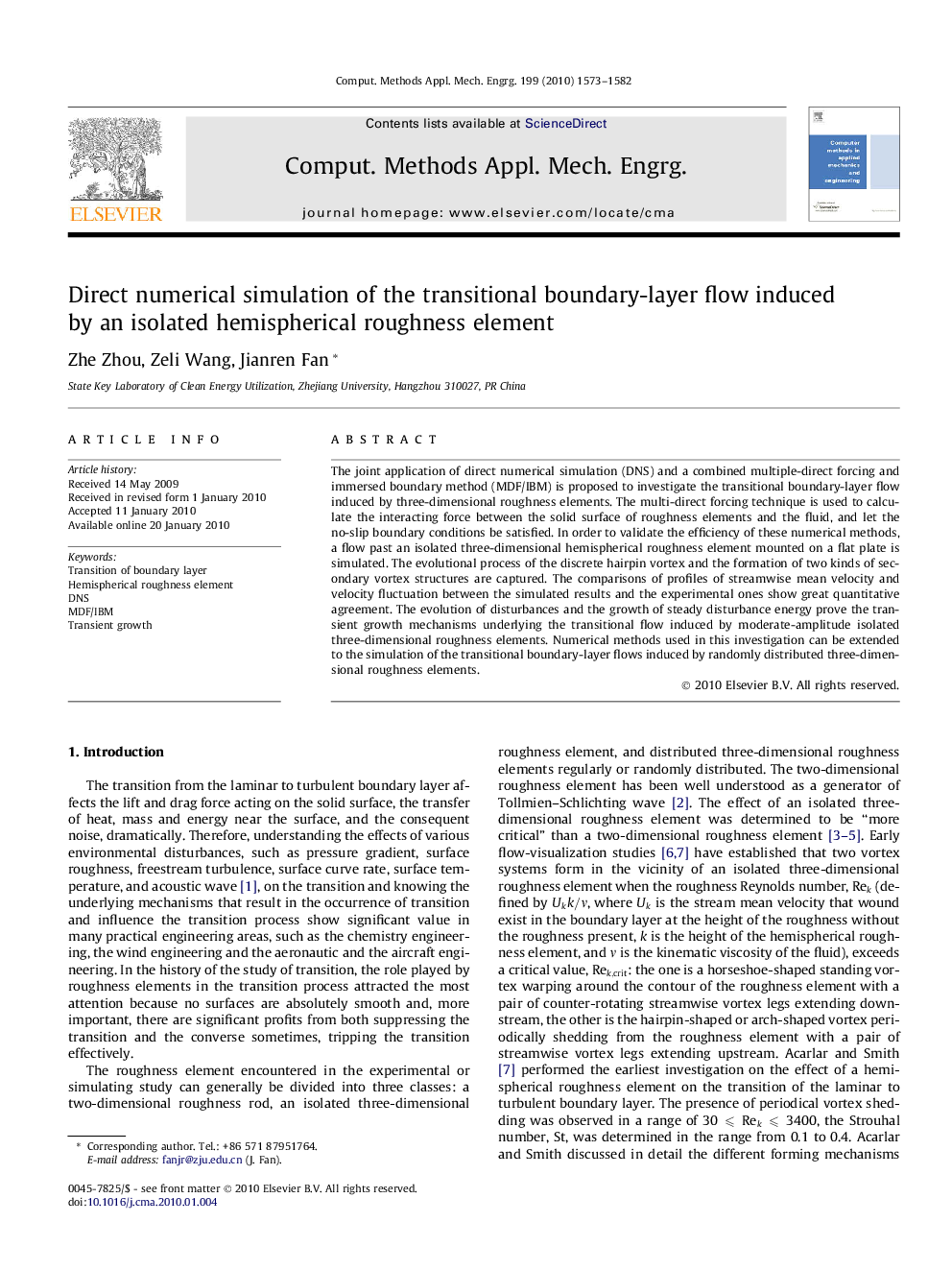| Article ID | Journal | Published Year | Pages | File Type |
|---|---|---|---|---|
| 498924 | Computer Methods in Applied Mechanics and Engineering | 2010 | 10 Pages |
The joint application of direct numerical simulation (DNS) and a combined multiple-direct forcing and immersed boundary method (MDF/IBM) is proposed to investigate the transitional boundary-layer flow induced by three-dimensional roughness elements. The multi-direct forcing technique is used to calculate the interacting force between the solid surface of roughness elements and the fluid, and let the no-slip boundary conditions be satisfied. In order to validate the efficiency of these numerical methods, a flow past an isolated three-dimensional hemispherical roughness element mounted on a flat plate is simulated. The evolutional process of the discrete hairpin vortex and the formation of two kinds of secondary vortex structures are captured. The comparisons of profiles of streamwise mean velocity and velocity fluctuation between the simulated results and the experimental ones show great quantitative agreement. The evolution of disturbances and the growth of steady disturbance energy prove the transient growth mechanisms underlying the transitional flow induced by moderate-amplitude isolated three-dimensional roughness elements. Numerical methods used in this investigation can be extended to the simulation of the transitional boundary-layer flows induced by randomly distributed three-dimensional roughness elements.
